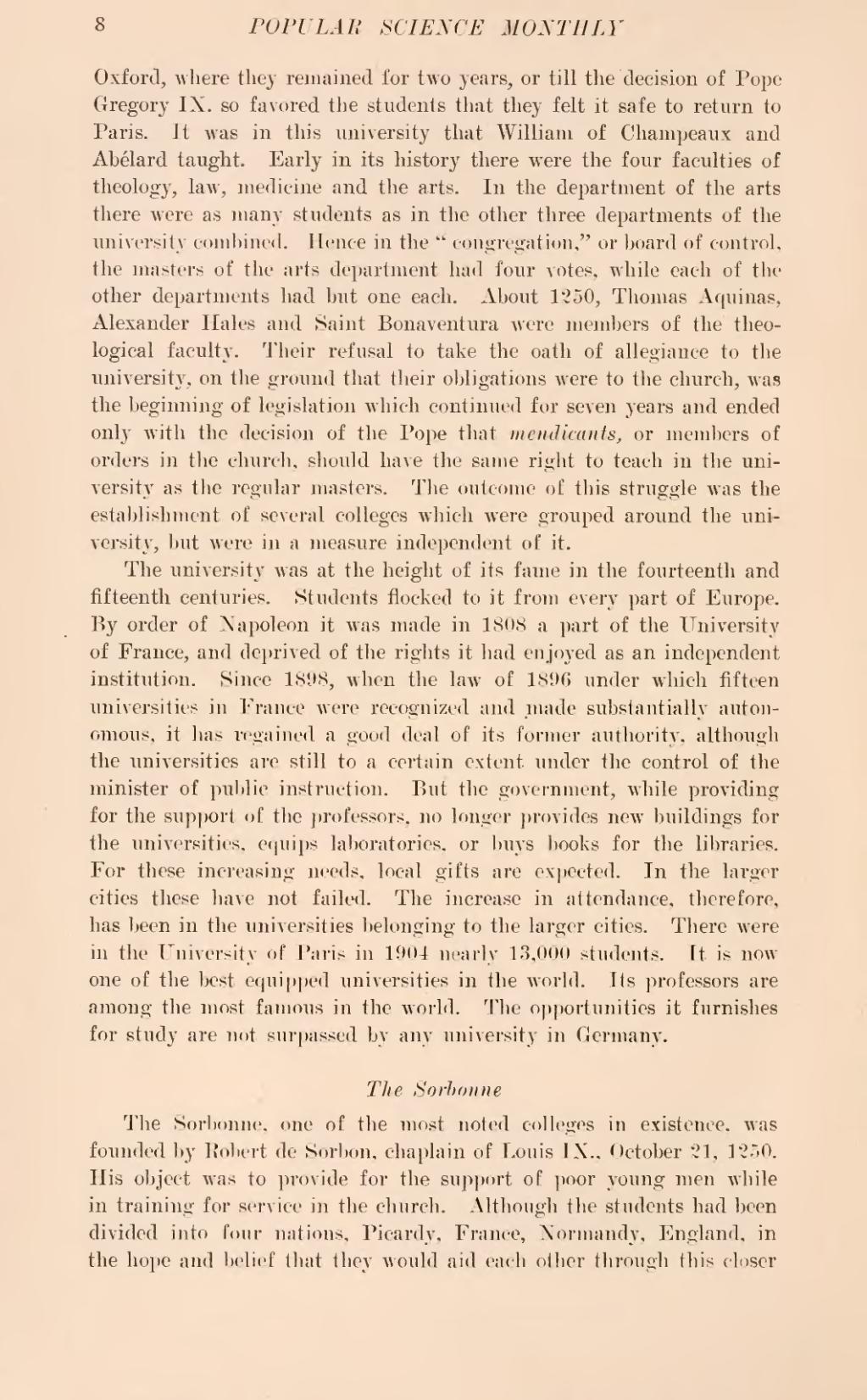Oxford, where they remained for two years, or till the decision of Pope Gregory IX. so favored the students that they felt it safe to return to Paris. It was in this university that William of Champeaux and Abélard taught. Early in its history there were the four faculties of theology, law, medicine and the arts. In the department of the arts there were as many students as in the other three departments of the university combined. Hence in the "congregation," or board of control, the masters of the arts department had four votes, while each of the other departments had but one each. About 1250, Thomas Aquinas, Alexander Hales and Saint Bonaventura were members of the theological faculty. Their refusal to take the oath of allegiance to the university, on the ground that their obligations were to the church, was the beginning of legislation which continued for seven years and ended only with the decision of the Pope that mendicants, or members of orders in the church, should have the same right to teach in the university as the regular masters. The outcome of this struggle was the establishment of several colleges which were grouped around the university, but were in a measure independent of it.
The university was at the height of its fame in the fourteenth and fifteenth centuries. Students flocked to it from every part of Europe. By order of Napoleon it was made in 1808 a part of the University of France, and deprived of the rights it had enjoyed as an independent institution. Since 1898, when the law of 1896 under which fifteen universities in France were recognized and made substantially autonomous, it has regained a good deal of its former authority, although the universities are still to a certain extent under the control of the minister of public instruction. But the government, while providing for the support of the professors, no longer provides new buildings for the universities, equips laboratories, or buys books for the libraries. For these increasing needs, local gifts are expected. In the larger cities these have not failed. The increase in attendance, therefore, has been in the universities belonging to the larger cities. There were in the University of Paris in 1904 nearly 13,000 students. It is now one of the best equipped universities in the world. Its professors are among the most famous in the world. The opportunities it furnishes for study are not surpassed by any university in Germany.
The Sorbonne
The Sorbonne, one of the most noted colleges in existence, was founded by Robert de Sorbon, chaplain of Louis IX., October 21, 1250. His object was to provide for the support of poor young men while in training for service in the church. Although the students had been divided into four nations, Picardy, France, Normandy, England, in the hope and belief that they would aid each other through this closer
